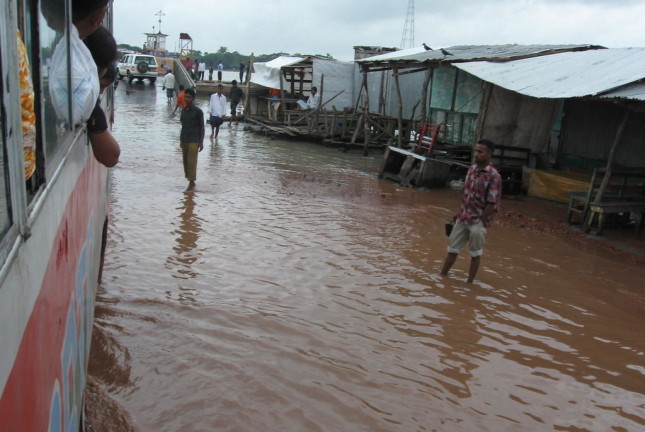-
To Mitigate Climate-Fragility Risks, Build Preventative Capacity in Fragile States
April 23, 2019 By Truett Sparkman
“When states face fragility and climate risks simultaneously, the risks and challenges are compounded,” according to The Intersection of Global Fragility and Climate Risks, a new global report commissioned by USAID, which was presented during a recent USAID Adaptation Community Meeting webcast. States facing major climate hazards, such as flooding, drought, and sea level rise, will be forced to contend with the cost of humanitarian and adaptation responses to mitigate the physical and livelihood risks threatening their populations. Fragile states struggling with issues of legitimacy in the social, economic, political, and security spheres may become overwhelmed by the process and cost of redirecting limited resources to address climate-induced disasters.
The scale and implications of these risk factors are extensive. The study found that a “majority of highly fragile states—26 of the 39 states with the highest or high fragility—have a large number of people or large proportion of their population facing high climate risks.” In three of these countries (Cambodia, Egypt, and Myanmar), more than 15 percent of their population live with very high exposure to climate risks. Many of the most vulnerable countries are located across Africa, the Middle East, and South and Southeast Asia.
“Most highly fragile states face multiple overlapping climate hazards,” said Ashley Morgan, State Fragility Initiative Director at Robert Strauss Center and one of the report’s authors. Colombia is a case in point. In the Colombian city of Mocoa, fragility and climate risks increased residents’ vulnerability to floods and drought, which became dangerous during a flash flood in April 2017.
For years leading up to the disaster, uncontrolled expansion of the city limits into floodplains was fueled in part by internally displaced people fleeing conflict between the government and guerrilla forces in Colombia’s hinterlands. Meanwhile, unchecked deforestation for cattle grazing and agriculture made the region prone to flooding and landslides. When a month’s worth of rain fell in one night, three of the city’s six rivers overflowed their banks. As many as 293 people died, and another 340 were injured. In their Colombian case study, the researchers concluded that a lack of appropriate policy measures preventing settlement in floodplains and deforestation in surrounding regions had combined with the displacement of households from rural to urban settlements to create notable fragility and climate risks.
During the webcast, Morgan spoke of the far-reaching implications of their report in: a) identifying focal points for intervention and channels for action in fragile states; b) supporting coordination of policy and early action to prevent new compound risks; and c) developing broader strategies for reducing fragility. Using these findings to check growing vulnerabilities in risk-prone countries will be important in light of increasingly frequent climate-driven events, such as in Colombia and many other countries that have suffered disasters due to preventable climate-fragility risks.
Cynthia Brady, Senior Peacebuilding and Conflict Advisor of USAID, emphasized, “There are so many opportunities to do better with prevention when we can see that the changes are not just on the horizon. They are happening.” To improve prevention, it is important to understand the dynamics in specific contexts. “Our premise is that if you don’t get the risk assessment right, it’s really hard to get the solutions right,” said Brady. To that end, the recent report provides new tools to better understand and respond to the dynamics at play in countries facing high and very high fragility-climate risks.
Sources: Associated Press, United States Agency for International Development.
Photo Credit: Flooding in Bangladesh, courtesy of Joe Coyle.
 A Publication of the Stimson Center.
A Publication of the Stimson Center.



